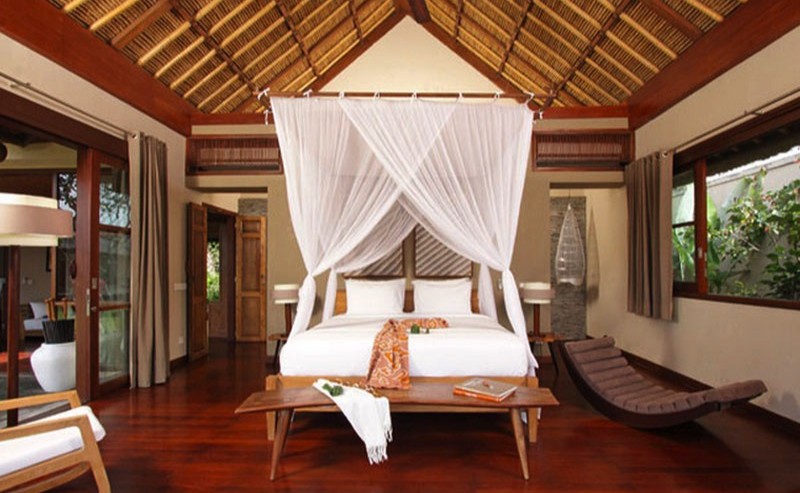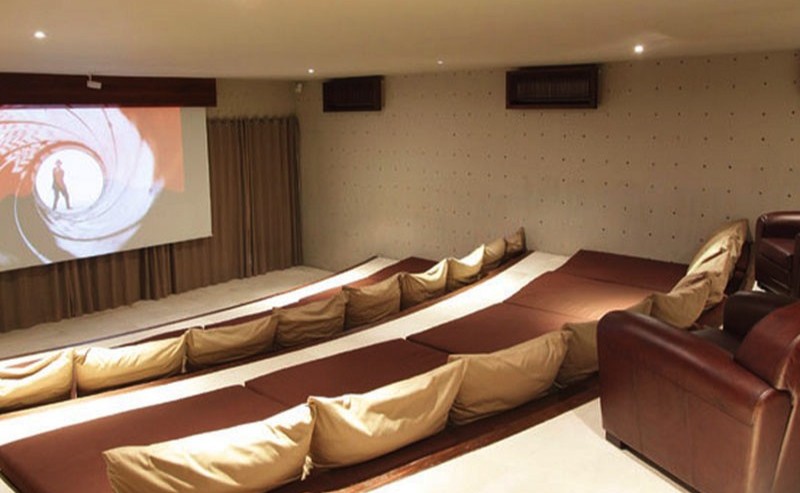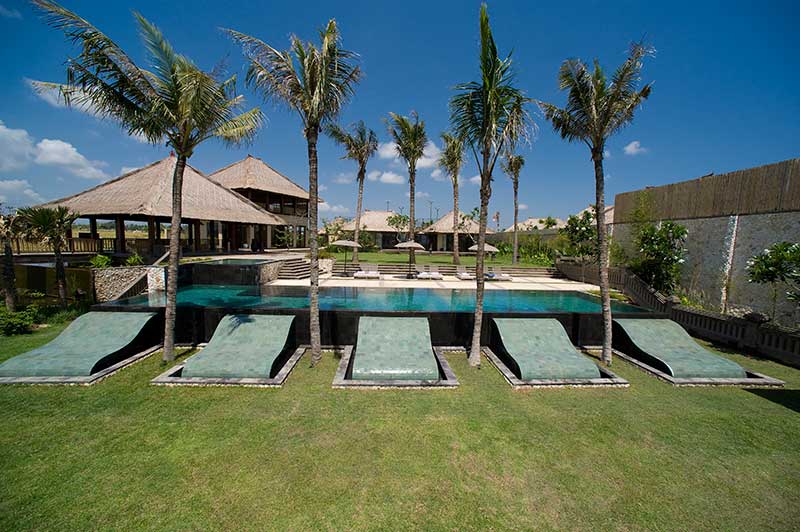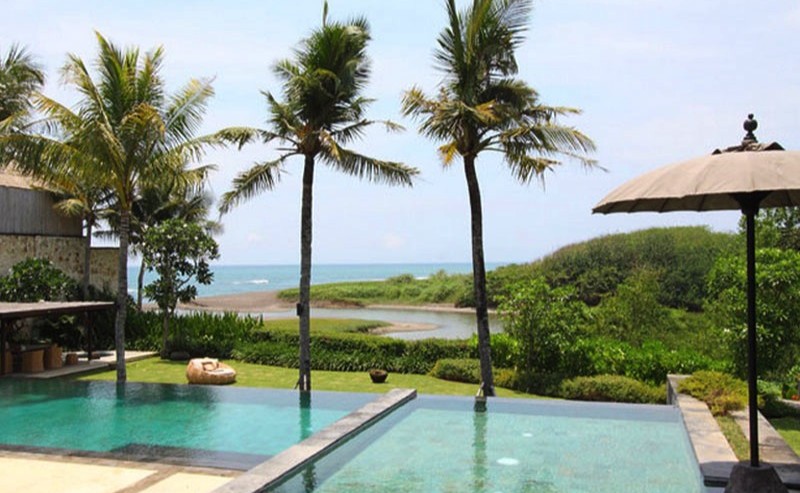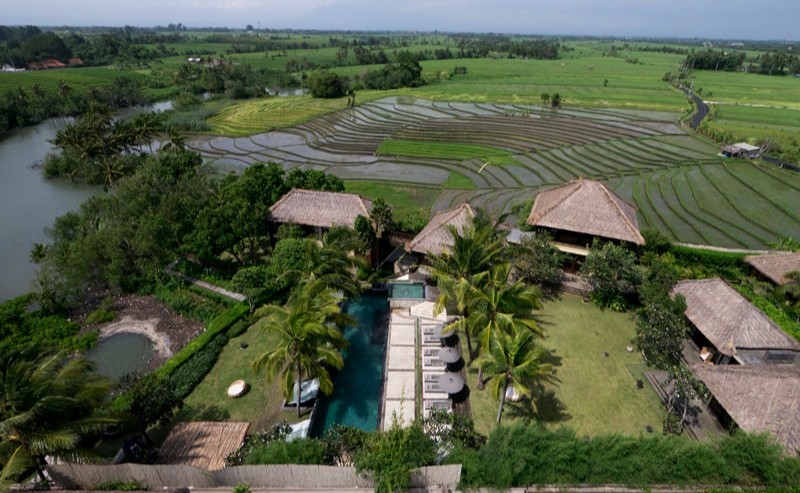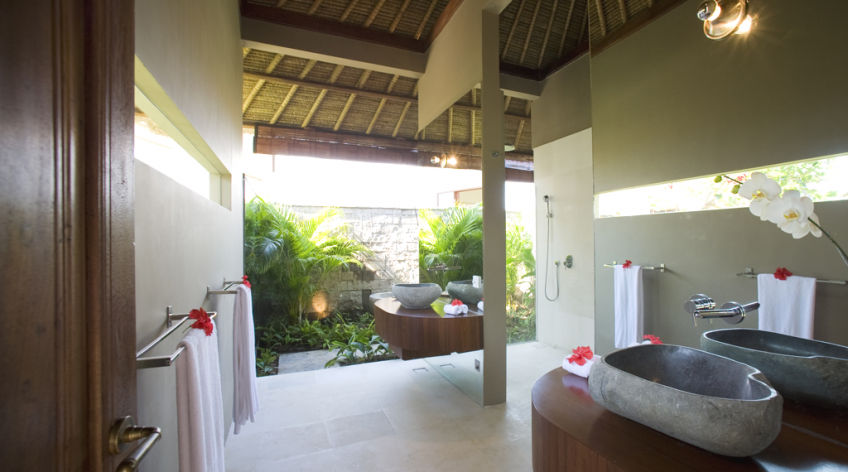Bali

Bali, Indonesia
Bali, the famed “Island of the Gods”, with its varied landscape of hills and mountains, rugged coastlines and sandy beaches, lush rice terraces and barren volcanic hillsides all providing a picturesque backdrop to its colourful, deeply spiritual and unique culture, stakes a serious claim to be paradise on earth. With world-class surfing and diving, a large number of cultural, historical and archaeological attractions, and an enormous range of accommodations, this is one of the world’s most popular island destinations and one which consistently wins travel awards. Bali has something to offer a very broad market of visitors from young back-packers right through to the super-rich.
Travel & Leisure Magazine has awarded Bali the World’s Best Island in 2009, while the Lonely Planet’s Best of Travel 2010 ranked Bali second place among the world’s Top Regions.
The rapid growth of development in tourism has had a big impact and influences to Bali tradition and lifestyle. Interestingly, Balinese culture is still as what it was, growing along with the of globalization. It is the Balinese civilization what makes the island different from other destination.
The tourism industry is primarily focused in the south, while significant in the other parts of the island as well. The main tourist locations are the town of Kuta (with its beach), and its outer suburbs of Legian and Seminyak (which were once independent townships), the east coast town of Sanur (once the only tourist hub), in the center of the island Ubud, to the south of the Ngurah Rai International Airport, Jimbaran, and the newer development of Nusa Dua and Pecatu.
Bali Geography
The island of Bali lies 3.2 km (2 mi) east of Java, and is approximately 8 degrees south of the equator. Bali and Java are separated by the Bali Strait. East to west, the island is approximately 153 km (95 mi) wide and spans approximately 112 km (69 mi) north to south; administratively it covers 5,780 km2, or 5,577 km2 without Nusa Penida District,[24] its population density is roughly 750 people/km2.
Bali’s central mountains include several peaks over 3,000 metres in elevation. The highest is Mount Agung (3,031 m), known as the “mother mountain” which is an active volcano. Mountains range from centre to the eastern side, with Mount Agung the easternmost peak. Bali’s volcanic nature has contributed to its exceptional fertility and its tall mountain ranges provide the high rainfall that supports the highly productive agriculture sector. South of the mountains is a broad, steadily descending area where most of Bali’s large rice crop is grown. The northern side of the mountains slopes more steeply to the sea and is the main coffee producing area of the island, along with rice, vegetables and cattle. The longest river, Ayung River, flows approximately 75 km.
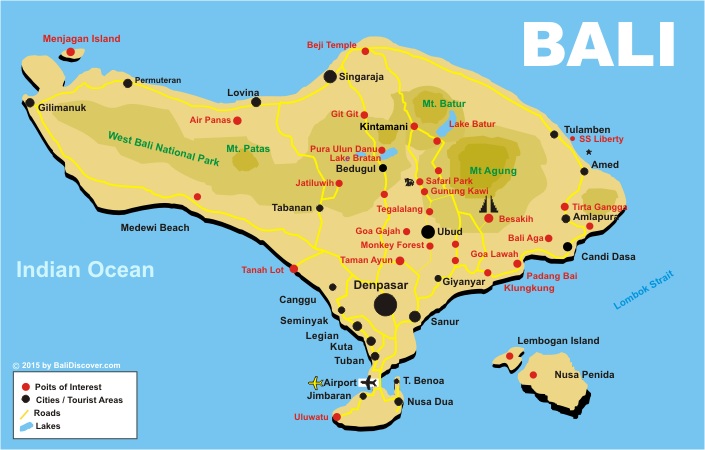
Bali Climate
Being just 8 degrees south of the equator, Bali has a fairly even climate year round. With sunshine shining throughout the year, Bali has a tropical monsoon climate, with pleasant day temperatures between 20 to 33 degrees Celsius or 68 to 93 degrees Fahrenheit. Rainy season starts from October to March, when the West monsoon brings heavy showers and high humidity. June to September is considered the driest season, with low humidity and it can be fairly cold in the evenings, the best time for any outdoor activities.
Religion
Unlike most of Muslim-majority Indonesia, about 83.5% of Bali’s population adheres to Balinese Hinduism, formed as a combination of existing local beliefs and Hindu influences from mainland Southeast Asia and South Asia. Minority religions include Islam (13.3%), Christianity (1.7%), and Buddhism (0.5%). These figures do not include immigrants from other parts of Indonesia.
Balinese Hinduism is an amalgam in which gods and demigods are worshipped together with Buddhist heroes, the spirits of ancestors, indigenous agricultural deities and sacred places. Religion as it is practised in Bali is a composite belief system that embraces not only theology, philosophy, and mythology, but ancestor worship, animism and magic. It pervades nearly every aspect of traditional life. Caste is observed, though less strictly than in India. With an estimated 20,000 puras (temples) and shrines, Bali is known as the “Island of a Thousand Puras”, or “Island of the Gods”. This is refer to Mahabarata story that behind Bali became island of god or “pulau dewata” in Indonesian language.
Bali Culture
Life in Bali is very communal under the organization of villages. Temple ceremonies, marriage, cremation, farming and even the creative art festivals are decided by the local community institution called “Banjar”. The responsibilities in the day-to-day life are normally administered by both the Banjar and the government. The local government mostly responsible for schools, health clinics, hospitals and roads, and Banjar is responsible for all other aspects of life. There is another association exists in the banjar named “Subak” that concerns to the production of rice and organizes the complex irrigation system. Every family who owns a rice field must be a member of their local Subak, which then ensures that every member gets his fair distribution of water. A banjar consists of an average of 50 to 150 family members, owning a meeting venue called the Bale Banjar, which is used for regular gatherings and a center for local gamelan orchestras and drama groups.
Bali is renowned for its diverse and sophisticated art forms, such as painting, sculpture, woodcarving, handcrafts, and performing arts. Balinese cuisine is also distinctive. Balinese percussion orchestra music, known as gamelan, is highly developed and varied. Balinese performing arts often portray stories from Hindu epics such as the Ramayana but with heavy Balinese influence. Famous Balinese dances include pendet, legong, baris, topeng, barong, gong keybar, and kecak (the monkey dance). Bali boasts one of the most diverse and innovative performing arts cultures in the world, with paid performances at thousands of temple festivals, private ceremonies, or public shows.
The Hindu New Year, Nyepi, is celebrated in the spring by a day of silence. On this day everyone stays at home and tourists are encouraged to remain in their hotels. On the day before New Year, large and colourful sculptures of ogoh-ogoh monsters are paraded and finally burned in the evening to drive away evil spirits. Other festivals throughout the year are specified by the Balinese pawukon calendrical system.
Temples
Bali is known as an island of thousands temples. In every village in Bali, there are several temples and at least one small temple in each home of Balinese which reach to a total of 10.000.
Balinese word for temple is ‘pura’ which means ‘space surrounded by a wall‘. Although many temples are quiet and uninhabited, they are transformed into colorful, active and decorated places of worship when there is a festival. While offerings are made, performances of traditional dances and gamelan, cockfighting and gambling enliven the atmosphere.
All temples derive their direction from the mountains and the sea. The direction toward the mountains, Kaja, is the most significant direction. The direction toward the sea is Kelod. The direction toward the sunrise, Kangin, is found in most secondary shrines.
Bali History
The first Hindus arrived in Bali as early as 100 BC, but the unique culture which is so apparent to any current day visitor to Bali hails largely from neighbouring Java, with some influence from Bali’s distant animist past. The Javanese Majapahit Empire’s rule over Bali became complete in the 14th century when Gajah Mada, Prime Minister of the Javanese king, defeated the Balinese king at Bedulu.
The rule of the Majapahit Empire resulted in the initial influx of Javanese culture, most of all in architecture, dance, painting, sculpture and the wayang puppet theatre. All of this is still very apparent today. The very few Balinese who did not adopt this Javanese Hindu culture are known today as the Bali Aga (“original Balinese”) and still live in the isolated villages of Tenganan near Candidasa and Trunyan on the remote eastern shore of Lake Batur at Kintamani.
With the rise of Islam in the Indonesian archipelago, the Majapahit Empire in Java fell and Bali became independent near the turn of the 16th century. The Javanese aristocracy found refuge in Bali, bringing an even stronger influx of Hindu arts, literature and religion.
Divided among a number of ruling rajas, occasionally battling off invaders from now Islamic Java to the west and making forays to conquer Lombok to the east, the north of the island was finally captured by the Dutch colonialists in a series of brutal wars from 1846 to 1849. Southern Bali was not conquered until 1906, and eastern Bali did not surrender until 1908. In both 1906 and 1908, many Balinese chose death over disgrace and fought en-masse until the bitter end, often walking straight into Dutch cannons and gunfire. This manner of suicidal fighting to the death is known as puputan. Victory was bittersweet, as the images of the puputan highly tarnished the Dutch in the international community. Perhaps to make up for this, the Dutch did not make the Balinese enter into a forced cultivation system, as had happened in Java, and instead tried to promote Balinese culture through their policy of Baliseering or the “Balinisation of Bali”.
Bali became part of the newly independent Republic of Indonesia in 1945. In 1965, after the failed coup d’etat which was allegedly backed by the Communist Party (PKI), state-instigated, anti-communist violence spread across Indonesia. In Bali, it has been said that the rivers ran red with the reprisal killings of suspected communists—most estimates of the death toll say 80,000, or about five percent of the population of Bali at the time.
The current chapter in Bali’s history began in the seventies when intrepid hippies and surfers discovered Bali’s beaches and waves, and tourism soon became the biggest income earner. Despite the shocks of the terrorist attacks in 2002 and 2005, the magical island continues to draw crowds, and Bali’s culture remains as spectacular as ever.
Bali Travel Facts:
Please see our Bali Infos here
Accommodations:
Please find our Bali Hotel List here.
Why not stay in a private luxury Bali Villa ?
Find here our Bali Villa List
Tours and Sightseeing in Bali:
Find here our private Tours for Bali
Attractions
 Things you have to see in Bali:
Things you have to see in Bali:
Besakih - The Besakih Temple, known as Bali’s ‘Mother Temple’ for over 1,000 years, sits 1,000 metres high on the southwestern slopes of Mount Agung. Besakih is an artistic and unique complex that comprises at least 86 temples which include the main Pura Penataran Agung (the Great Temple of State) and 18 others. Besakih is the biggest and holiest of the island's temples and is surrounded by breathtaking and scenic rice paddies, hills, mountains, streams, and more. Pura Besakih features three temples dedicated to the Hindu trinity. Pura Penataran Agung in the centre has white banners for Shiva, the destroyer; Pura Kiduling Kreteg on the right side is with red banners for Brahma, the creator; and Pura Batu Madeg represents Vishnu, the preserver, with its black banners.
Pura Besakih is the only temple open to every devotee from any caste groups. This is because of its nature as the primal centre of all ceremonial activities.
Uluwatu Temple – Pura Luhur -- Imagine a large rugged limestone cliff with a temple perched on it, almost like a scene from cliffhanger, to add to it’s dramatic grandeur. It is situated in the island commonly known as Bukit Peninsula, where it also include Bali’s few best beaches like Balangan and also has many good surfing spots. The temple is itself a majestic structure, constructed and expanded by many famous safes since in the 11th Century, it perched at the steep cliff of 70 meters above the Indian ocean. If you go even higher grounds nearby, you will be rewarded with breathtaking view of either side and sunsets over Uluwatu temple itself.
Pura Tanah Lot - Another majestic rock formation that lays as a foundation of a popular pilgrimage temple. It is most popular for its serenity and cultural significance as it is associated with the Balinese mythology as one of the seven temples that form a ring in the southwest of Bali. Try to go there during low tide so that you can experience walking across the water to the temple for the full experience.
Pura Ulun Danu Bratan (Bali’s temple by the lake) - This is the famous temple by the lake in Bali, where instead of like the rest perching on the cliff rock, this one is serenely resting at the edge of Lake Bratan. Imagine beautifully structured temple with double the beauty due to reflections of the clear lake.
Ubud - Yes despite that one might be trying to escape the eat, pray, love trail, Ubud is one place you cannot miss. It is still the heart of Bali, where all the action is and all the people and energy are focused on. Ubud is packed and condensed with the best of Bali, ranging from nature, culture and people, temples, museums, rolling rice/paddy fields and man-made gardens and parks. You may take a interesting bike tour around here or take up cooking, adventure activities like whitewater rafting and other outdoor activities, relax yourself with yoga and meditation or have some pampering of spas and massages and also enjoy arts and theatres and not to forget shopping. Just so you see Ubud have a little bit of everything for almost everyone.
The Ubud Art Market, locally referred to as 'Pasar Seni Ubud' is located opposite the the Puri Saren Royal Ubud Palace and is open daily. Here you can find beautiful silk scarves, lightweight shirts, handmade woven bags, baskets or hats; statues, kites and many other hand-crafted goods.
Taman Ayun Temple - in 1634, the temple is the only temple complex exposing the Balinese traditional building structure, Meru. Taman Ayun, means beautiful garden, located in the village of Mengwi, 18km west of Denpasar, is indeed one of Bali’s most picturesque temples. The King of Mengwi, I Gusti Agung Anom, built is stately proportioned courtyards and large surrounding moat in the year 1634. Containing both the Royal family ancestral shrines and the strayed Meru shrines to the major deities, Taman Ayun became the main temple for the ancient Kingdom.
Tegallalang Rice Terraces in Ubud is famous for its beautiful scenes of rice paddies involving the subak (traditional Balinese cooperative irrigation system), which according to history, was passed down by a revered holy man named Rsi Markandeya in the eighth century. Tegallalang forms the three most splendid terraced landscapes in Ubud's shared region, with the others being in the villages of Pejeng and Campuhan. Tegallang alone has an outlook that spreads down before you and away to the rice terraces on the slopes across the valley. The high roadside location is cool and breezy and it is a well-known spot for tourists to stop and take photos.
Kintamani Volcano & Mount Batur - Bali volcano, also known as Kintamani volcano and Mount Batur have been the most favorite tourist destination in the central mountains area of Bali. With the magnificent view of its caldera, and also the beauty of Lake Batur which fills the large part of the caldera, the crater of Mount Batur is the central interest of the place which is estimated to have 13 square km size.
The view is the main reason to come here. Surrounded by the captivating nature of Mount Batur, you will find plenty more reasons to linger in the crater itself, and be sure to also take in the joyous winding road along the lake shore to Toya Bungkah, Pura Ulan Danu Batur, or even the hot springs.
The Kehen Temple is located in Bangli regency, about 40 KM away to the eastern part of Denpasar City, just north of the town of Bangli. Kehen is one of the largest temples in Bali, and a stirring example of the virtuosity of the stone-carvers of the region.
Goa Gajah - The eleventh century cave built on the hillside is one major tourist attraction close to Ubud-Gianyar road. Besides the cave which is the key attraction, the traditional bathing pool and a number of ancient stone relics fulfill the curiosity for some mystical experience.
Monkey Forest, Ubud - A number of temples in Bali are well known for being the residences of monkey population. Name one is the monkey forest in Sangeh Village, 21 KM away from Denpasar. The resident monkeys are told to be the guardians of Pura Bukit Sari.
Things to do:
Here are some suggestions what to do in Bali:
Climb Mount Batur at Kintamani
If the surfs have not break your bones yet, you may want to try yet another adventure in Bali. Climb the famous Mount Batur, a volcanic mountain that rise over a lake which beautifully mirrors it.
Watch Kecak Dance in Puri Dalem Taman Kaja
Kecak dance is one of the traditional dance and musical drama in Bali that is enchanting and favourite among travelers. Kecak dance have 150 performers wearing check cloth around their waist chant the word “cak” while throwing up their arms in depiction of the battle of Ramayana, with roots of the dance dating back to sanghyang, a trance-like exorcism dance of the old.
White water rafting on Ayung River at Sayan
Ayung river, right down inside the Ayung gorge, is very scenic for a white water rafting. Imagine yourself rafting through the very heart of Bali, with you riding the wild rapids through rice paddies, people working the fields and children playing. You will feel like your are traveling in speed and style through a motion picture of the hidden part of Bali. There are two well established operators that you can find at the main road in Sayan, but there are also other new operators which open up in recent years.
Explore Bali on two wheels
There are many cycle tours popping up in Bali now simply because it is such a wonder to explore Bali this way. For those who rather go independent, you may also rent a bicycle and do your own exploring to your heart’s content. Please see our cycling tours !
Eat seafood in Jimbaran Bay
At Jimbaran Bay, you may walk down along the beach and find it dotted with warungs and candle-lit tables like mushrooms after rain. Here you can dine on prawns, squids and fishes fresh of the sea onto your table, almost literally. Couple it by feasting over a sun setting over the horizon make this authentic setting much more atmospheric.
Snorkel or dive the reefs of Bali
While Bali have so much to offer on land and beaches and mountains, do not forget the marvels of what’s under the sea. Here the sea is full of wild marin life such as manta rays and turtles while surrounded by beautiful coral reefs. For the best snorkeling experience, take a boat out the coastline to Lembongan Island, where the reefs surrounding it are spectacular. Here divers can also experience a 40 m drop off into the wonders of the sea.
Join a festival like Bali Arts Festival
The Balinese knows their arts well and they celebrate in style. Bali Arts Festival is an annual event, normally held from June to July. This is a well known event throughout the world where travelers from all over the world travel to Bali to catch this festival of a full month of daily cultural performances, handicraft exhibitions and many more arts related activities.
Please see our tours to explore the real Bali !! Restaurants
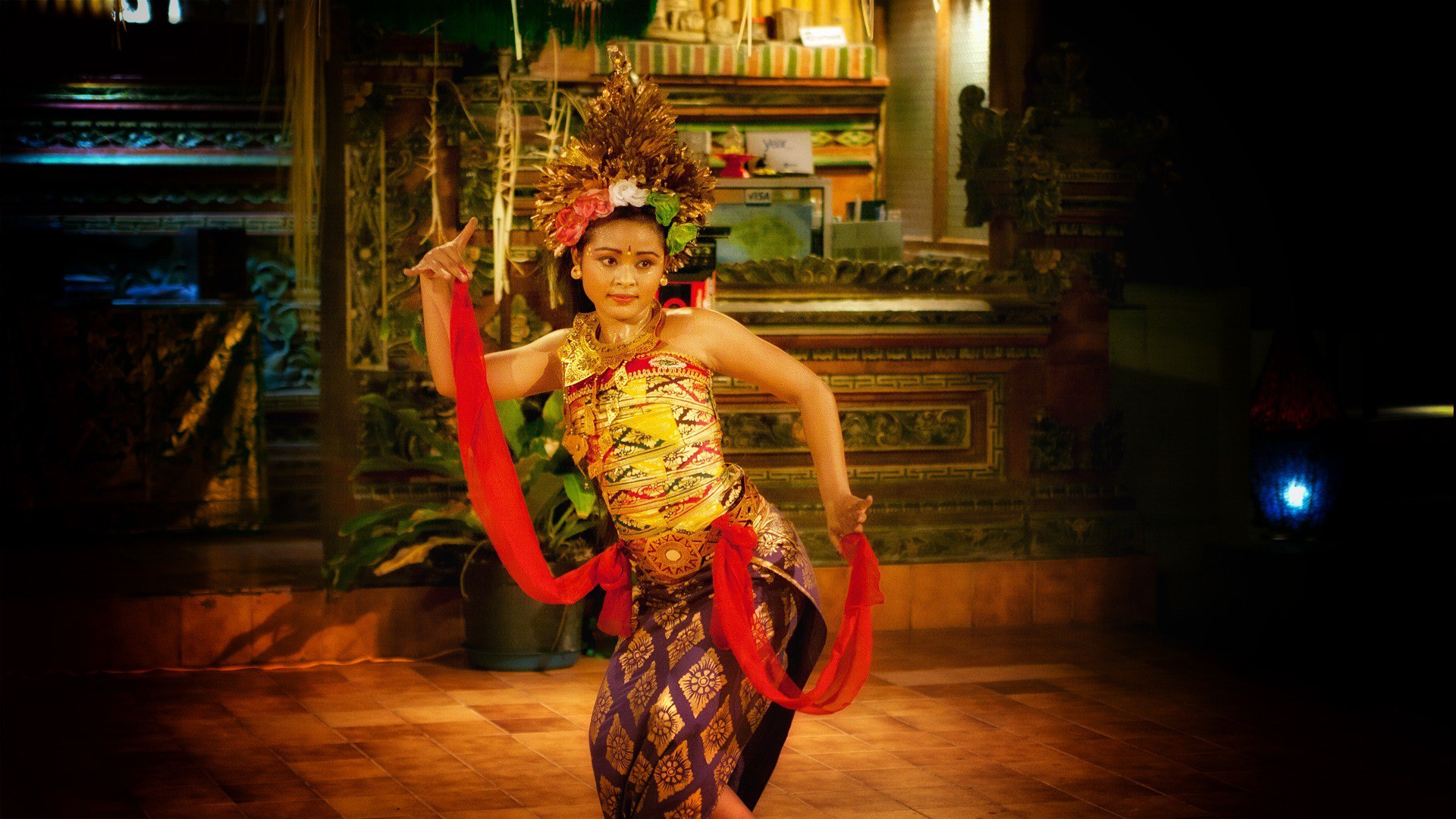
Read more

